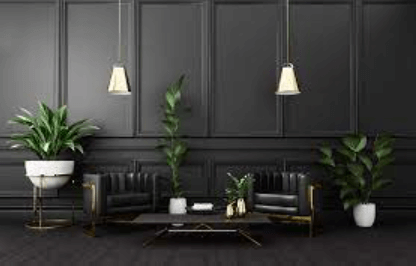Elevating Interiors: The Artistry of Wall Mouldings in Architectural Design

In the realm of interior design, every detail holds the potential to transform a space from ordinary to extraordinary. Wall mouldings, with their timeless elegance and architectural charm, stand as one such element that elevates interiors to new heights. In this exploration, we delve into the artistry of wall mouldings, uncovering their historical roots, diverse applications, and the enduring impact they bring to modern architectural design.
Historical Roots and Architectural Significance:
The origins of wall mouldings can be traced back to classical architecture, where they were employed to delineate and accentuate structural elements. Over the centuries, the use of mouldings evolved as an essential element of design, finding its way into various historical periods and influencing architectural styles. The intricate detailing of wall mouldings became synonymous with sophistication and craftsmanship, leaving an indelible mark on the history of interior design.
Types of Wall Mouldings:
Wall mouldings come in a variety of types, each contributing its unique character to interior spaces. Some of the most common types include:
1. Crown Moulding: Installed where walls meet the ceiling, crown moulding adds a touch of grandeur, enhancing the transition between vertical and horizontal surfaces.
2. Chair Rail Moulding: Positioned at chair height along the walls, chair rail moulding serves both a practical and decorative purpose, protecting walls from chair backs while adding visual interest.
3. Baseboard Moulding: Found at the base of walls, baseboard moulding provides a finishing touch, covering the joint between walls and floors while protecting the wall from scuffs and impacts.
4. Panel Moulding: Used to create decorative wall panels or wainscoting, panel moulding adds texture and dimension to walls, creating visual interest and architectural depth.
Architectural Impact and Visual Interest:
The addition of wall mouldings brings a profound architectural impact to interiors. Beyond their functional roles, mouldings introduce visual interest, depth, and a sense of refinement. The interplay of light and shadow on the detailed profiles of mouldings creates a dynamic and elegant ambiance, transforming plain walls into canvases of architectural artistry. The versatility of wall mouldings allows designers to experiment with different profiles and arrangements, adding a layer of sophistication that enhances the overall aesthetic appeal of a space.
Customization Opportunities:
Wall mouldings offer abundant opportunities for customization, allowing homeowners and designers to tailor their appearance to suit specific design preferences. The choice of materials, profiles, and finishes provides a broad range of possibilities. Whether opting for intricately detailed crown moulding in a traditional setting or choosing streamlined, modern profiles for a contemporary look, customization ensures that wall mouldings seamlessly integrate with the overall design vision of a space.
Modern Interpretations:
While wall mouldings have deep historical roots, their relevance extends into modern design trends. Contemporary interiors often feature simplified and streamlined versions of traditional moulding profiles. The emphasis on clean lines and minimalist aesthetics gives wall mouldings a modern twist, allowing them to complement a wide range of design styles, from mid-century modern to industrial chic.
Creating Focal Points and Accentuating Architecture:
Wall mouldings have the power to create focal points within a room and accentuate architectural features. When strategically placed around doors, windows, or fireplace mantels, mouldings draw attention to these elements, emphasizing their significance and contributing to the overall design narrative. The thoughtful use of mouldings enhances the architectural integrity of a space, creating a harmonious balance between form and function.
Installation Considerations:
Installing wall mouldings requires precision and attention to detail. Professional installation ensures seamless joints, precise alignments, and a polished finish. Properly installed mouldings enhance the visual impact of a room, creating a cohesive and well-defined architectural framework.
Read also: Is Your KitchenAid Dishwasher Not Draining Properly? Discover Quick Solutions Here
Maintenance and Longevity:
Maintaining wall mouldings is relatively straightforward, typically involving regular cleaning and occasional touch-ups. The durability of mouldings depends on the chosen material and finish. Wood mouldings may require periodic refinishing, while alternative materials such as PVC or polyurethane offer low-maintenance options that withstand the test of time.
Conclusion:
Wall mouldings, with their rich historical roots and timeless elegance, continue to play a pivotal role in shaping the character of interior spaces. As an essential element of architectural design, mouldings have the ability to transform plain walls into captivating canvases. Whether celebrating historical traditions or embracing modern interpretations, the artistry of wall mouldings remains an enduring and indispensable component of the ever-evolving landscape of interior design.







